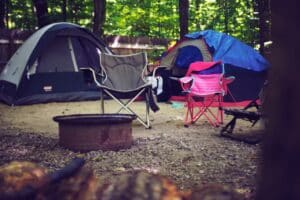Table of Contents
Emergencies rarely announce themselves, and when they strike, preparation can mean the difference between chaos and calm. Whether it’s a power outage, flood, wildfire, or unexpected evacuation, having a well-prepared 7-day survival kit ensures you and your loved ones can stay safe and self-sufficient. This guide walks you through the essential items, organization tips, and expert recommendations to build a reliable survival kit that covers every need for an entire week.
Why You Need a 7-Day Survival Kit
Most official emergency guidelines, such as those from FEMA and the Red Cross, recommend at least three days’ worth of supplies. However, in severe situations—especially in rural areas or large-scale disasters—relief efforts can take up to a week to reach you. A 7-day kit provides the peace of mind that comes with real readiness, not just bare minimum survival.
Food and Water Essentials
Water Supply
Water is the foundation of survival. You’ll need at least one gallon of water per person per day for drinking and sanitation, totaling seven gallons per person for a week. Store it in BPA-free containers and rotate every six months. A portable water filter like LifeStraw or Sawyer Mini can provide long-term purification.
Food Supply
Choose non-perishable, easy-to-prepare foods such as:
- Canned beans, vegetables, and soups
- Freeze-dried meals
- Protein bars and nuts
- Peanut butter or high-calorie spreads
- Instant oatmeal or rice pouches
Ensure you have a manual can opener and disposable utensils.
Shelter and Warmth
Emergency Shelter
If you need to evacuate or your home becomes uninhabitable, a compact tent or thermal tarp can serve as immediate protection. Include lightweight sleeping bags or emergency blankets designed to retain up to 90% of body heat.
Clothing
Pack moisture-wicking layers, waterproof outerwear, extra socks, and durable shoes. Remember that staying dry is as important as staying warm, especially in colder climates.
First Aid and Hygiene
First Aid Kit
A proper first aid kit should include:
- Bandages, gauze, and adhesive tape
- Antiseptic wipes and antibiotic ointment
- Pain relievers (ibuprofen, acetaminophen)
- Tweezers, scissors, and safety pins
- Prescription medications (7-day supply)
- Emergency contact and allergy information
Hygiene Items
- Biodegradable soap and wet wipes
- Toothbrush, toothpaste, and hand sanitizer
- Feminine hygiene products
- Trash bags for waste management
Tools and Equipment
Multi-Use Tools
A reliable multitool or Swiss Army knife can handle most small repairs and tasks. Include duct tape, paracord, and zip ties for quick fixes.
Lighting and Power
Pack multiple light sources: headlamps, flashlights, and solar lanterns with extra batteries. A hand-crank flashlight is also a smart backup. For communication, a solar-powered or hand-crank emergency radio helps you stay informed about weather updates or evacuation notices.
Communication and Navigation
Important Documents
Keep copies of identification, insurance policies, emergency contacts, and medical records in a waterproof bag.
Navigation Tools
Even in the age of smartphones, always carry a paper map and a compass in case of power or signal loss.
Personal Defense and Self-Reliance
Basic Protection Tools
Depending on your comfort and local laws, include pepper spray, a whistle, or other non-lethal defense tools. Your safety is paramount, especially in isolated situations.
Self-Reliance Skills
Knowledge is as valuable as gear. Learn basic first aid, knot-tying, fire-starting, and how to purify water without modern tools.
Organizing Your Kit
Accessibility and Weight
Distribute items across labeled waterproof bags: one for food, one for first aid, one for shelter, and one for tools. If possible, build two kits—one portable “go bag” and one larger “home kit.”
Maintenance and Review
Check your kit every six months to replace expired items, recharge batteries, and update documents.
Final Thoughts
Preparedness doesn’t mean paranoia—it means confidence. A 7-day survival kit ensures you’re equipped to handle uncertainty with resilience and composure. Whether it’s a natural disaster, prolonged power outage, or unexpected journey, your kit is more than gear—it’s peace of mind.






